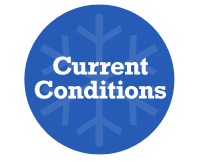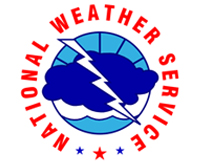WAXING • CLOTHING
Choosing skis can be a difficult task, so it’s a good idea to find a ski shop and a salesperson with whom you feel comfortable. When purchasing skis from second-hand stores, tag sales, or other parents, you’ll need to have some basic knowledge of equipment and sizing.
There are two types of nordic skiing: classic and skate. Classic skiing is the traditional form, in which the skier moves along in a straight line (sometimes in tracks) by pushing off the center of the skis.
Skate skiing requires shorter skis that are pushed outward from the center in a motion similar to iceskating.
Skis (measured in centimeters)
Classic skis: Either waxable or waxless (we recommend waxless for beginners). Length: just above the
child’s head.
Skate skis: Waxable. Length: up to the child’s eyes.
Combi skis (which can be waxed for use as classic skis or as skate skis): Waxable. Length: Probably best to size these as skate skis, especially if child is a beginner.
Boots and Bindings
There are several types of boots, including classic boots, skate boots, and combi boots, and several binding systems (NNN, SNS, 3-pin, and backcountry). The boots you buy must match the bindings on the skis.
Note: 3-pin bindings are an older system of binding that can be difficult for kids to use. The three holes in the tip of the boot must be aligned perfectly with the pins on the ski. Also, older boots sometimes lack insulation, which can mean cold feet and unhappy children. Be sure your child’s boots fit properly with a single wool sock. Boots that are too small result in cold feet, and boots that are too large can cause blisters and frustration because the child will have less control of the skis.
Poles (measured in centimeters)
Classic-length: With the tip of the pole in the snow, the pole should just touch the underarm of the child
Skate-length: With the tip of the pole in the snow, the pole should reach the chin of the child
Wax
If your child has waxable skis (classic, skate, or combi), you will need a wax kit, including a scraper, cork, and basic waxes, as well as a wax remover (solvent). Be sure to take advantage of waxing clinics early in the ski season.
Equipment guidelines based on child’s group placement
Berkshire Trails places children in groups divided by age and ability.
Lollipop (Kindergarten to 1st grade)
First-timers, beginners.
Children is this age group learn to classic ski; they do not usually skate ski yet. It is best to have real skis with bindings rather than skis that strap onto winter boots. Our club recommends waxless skis, which have “fish scales” on the base to grip the snow, and classic-length poles (with the tip of the pole in the snow, the pole should just touch the underarm of the child).
Greylock (grades 1 to 2)
Beginners with a little experience.
Same equipment as Lollipop group, although kids who try and like skate skiing may want skate skis.
Katahdin (grades 5, 6, 7, 8)
Older beginners.
Same equipment as Lollipop group, although kids who are good athletes might want to try skating and would need either combi skis, which can be used for both classic and skate skiing, or two pairs of skis (classic and skate). If your child has two pairs of skis, the classic pair can be waxless.
Rainier (grades 3 to 4)
Intermediate skiers.
Skating technique is introduced. Your child needs either combi skis, which can be used for both classic and skate skiing, or two pairs of skis (classic and skate). If your child has two pairs of skis, the classic pair can be waxless.
At this level, your child must have two different sets of poles: classic-length and skate-length, which are longer. Skate poles usually stand up to the child’s chin.
Wax is now needed. Combi skis must be waxed differently depending on whether your child plans to classic ski or skate ski. For classic skiing, a kick wax must be applied to the “kick zone” of the skis. For skate skiing, the kick wax must be removed, and often a glide wax is applied to the entire ski (this wax is removed to classic ski).
Matterhorn (grades 4 to 5)
More advanced intermediate skiers.
Same equipment as Rainiers.
Denali (grades 5 to 6)
Intermediate to advanced skiers.
A good time to buy or rent two sets of equipment, one for classic and one for skating, if your child plans to continue skiing and is skillful enough to warrant the investment.
Everest (grades 6, 7 & 8)
Intermediate to advanced skiers.
Two sets of skis and poles are best. Classic and skate skis are cut differently; the specialized ski will help in skill development.


